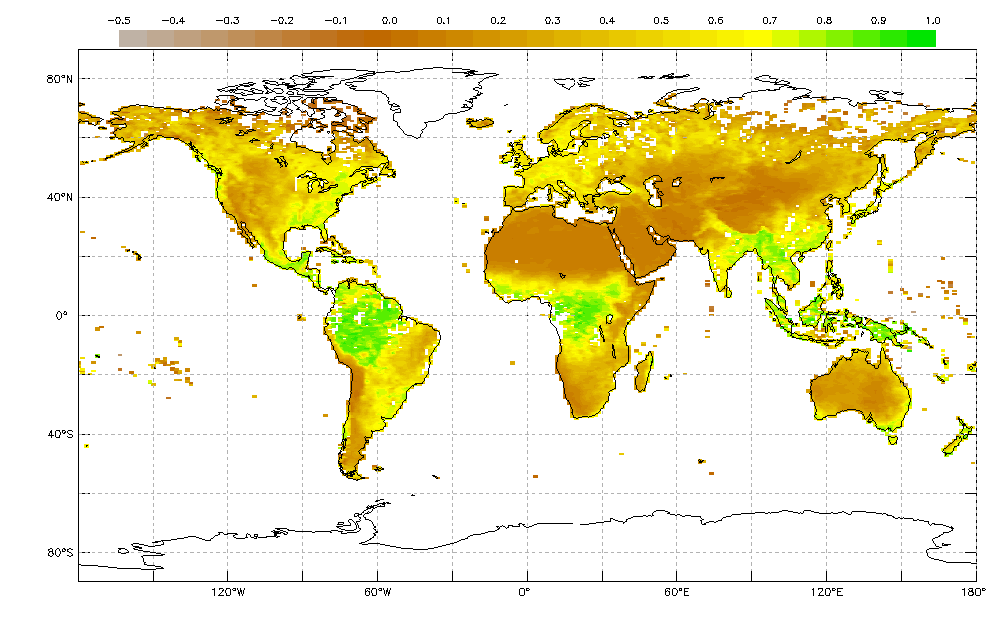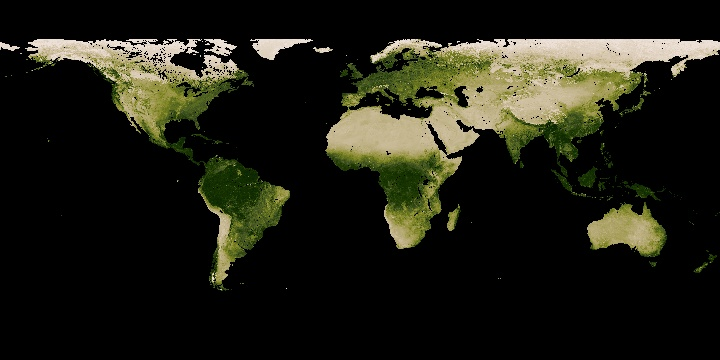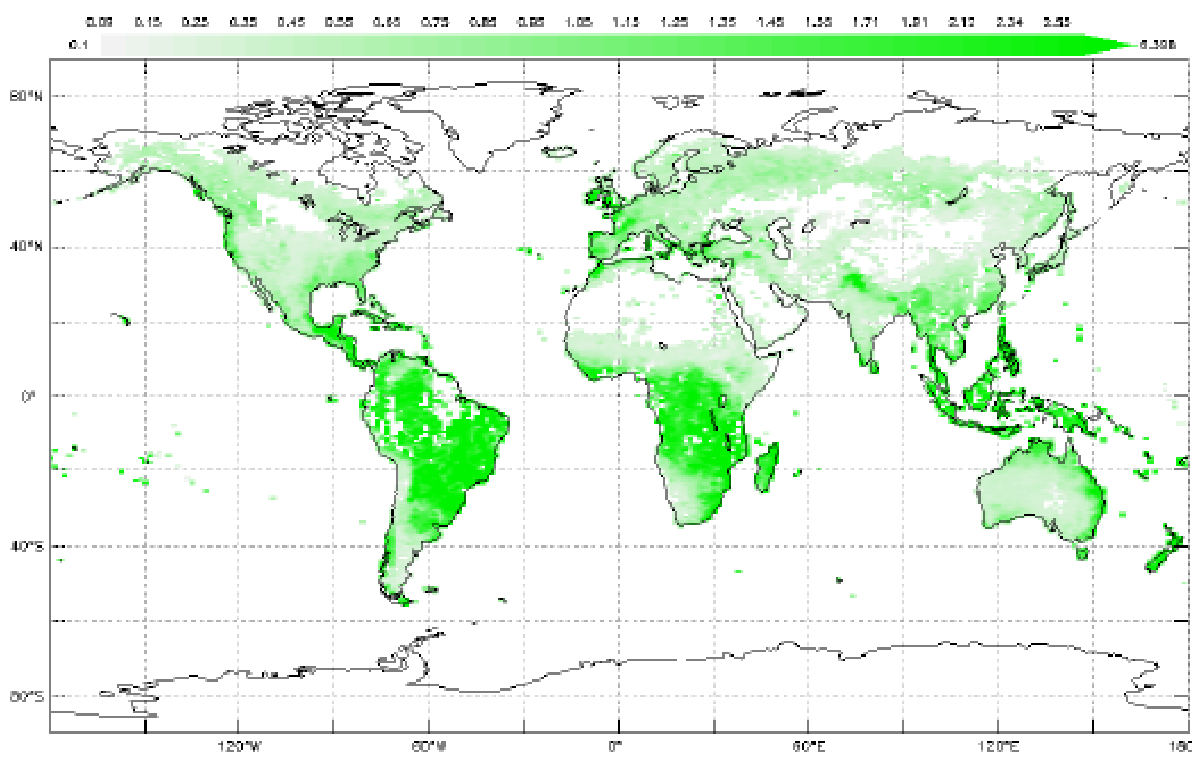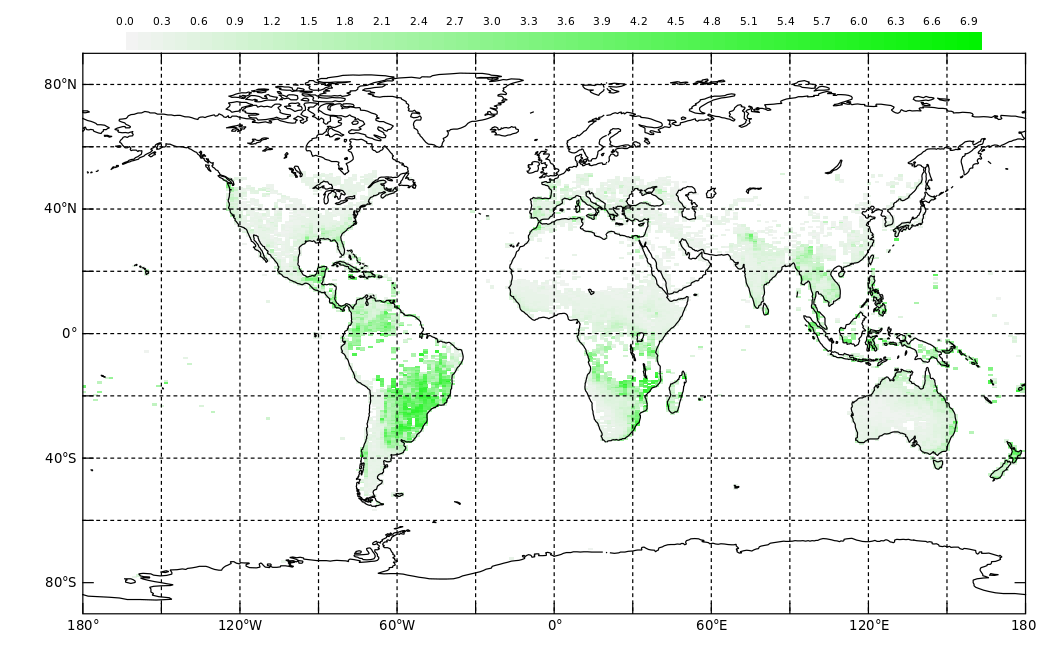Mini Lesson/Activity
Analysis & Application of Seasonal Vegetation Data
Overview
Students observe seasonal images of Monthly Normalized Difference Vegetation, looking for any changes in vegetation that are occurring throughout the year. They put the images in order based on what they know about seasonal changes.
Student Directions
NDVI is a measure of the "greenness" of Earth Landscapes. Observe the seasonal map of Monthly Normalized Difference Vegetation below. Match the image with the four different maps for the months of 2017. These are available in Document Resources or in handouts provided by your teacher.
You will analyze these data for any changes in vegetation that are occurring throughout the year.

Source: My NASA Data, NASA MISR
https://mynasadata.larc.nasa.gov/sites/default/files/inline-images/NDVI_D_plot_image.png
The colors on this maps show a measure of the "greenness" of Earth's landscapes. The values on these maps—ranging from -0.1 to 0.9—have no unit. Rather, they are index values in which higher values (0.4 to 0.9) show lands covered by green, leafy vegetation and lower values (0 to 0.4) show lands where there is little or no vegetation.
![]()
Steps:
- Check with your instructor on how to submit your answers.
- The vegetation maps (Images A-D) were created to represent the following time periods: February 2017, June 2017, October 2017, and December 2017 but are not in order.
- Match the maps with their corresponding months from 2017 based on your observations. For example, Map X = February 2017, etc.
- Identify the seasonal cycles for vegetation throughout the year by answering the following questions.
- What changes do you see through the year?
- Choose a location or region. During which months do the extreme highs and lows occur? What explanations can you suggest for the timing of those extremes?
- Which regions experience both the extreme highs and lows? Which regions don’t experience the extremes? Why do you think this happens?
Background:
As seen through a prism, many different wavelengths make up the spectrum of sunlight. The surfaces of different objects can absorb or reflect certain wavelengths of light. Chlorophyll, for example, is a pigment that exists on plant leaves. It absorbs visible light for use in photosynthesis. At the same time, the cell structure of the leaves reflects near-infrared light. The more leaves a plant has, the more they affect the wavelengths of light. Scientists use satellite sensors to measure the wavelengths of red light and near-infrared light absorbed and reflected by plants. They can study these interactions to generate maps of green vegetation and vegetation density around the world. This is known as a Normalized Difference Vegetation Index, or NDVI.
NDVI is a measurement derived by subtracting a plant's reflectance of red light from near-infrared light and then divided by the addition of the red and near-infrared light reflected. This results in an NDVI value. NDVI maps shown in this exercise use data collected by the Moderate Resolution Imaging Spectroradiometer (MODIS) aboard NASA's Terra satellite.
Scientists produce NDVI maps to investigate shifts in plant growth patterns. Plants are sensitive to their environment, and so they serve as a good indicator whenever there are changes in environment. Farmers and resource managers also use NDVI maps to help them monitor the health of our croplands and forests. So, these maps are used both for scientific research as well as societal benefit.
Teacher Note
The images can be downloaded, printed, and distributed in a Face-to-Face setting, along with the questions below. Alternatively, virtual learners will need to access the Document Resources PDF to view the maps.
These mini lessons/student activities are perfect "warm up" tasks that can be used as a hook, bell ringer, exit slip, etc. They take less than a class period to complete. Learn more on the "My NASA Data What are Mini Lessons?" page.
Teachers who are interested in receiving the answer key, please complete the Teacher Key Request and Verification Form. We verify that requestors are teachers prior to sending access to the answer keys as we’ve had many students try to pass as teachers to gain access.





